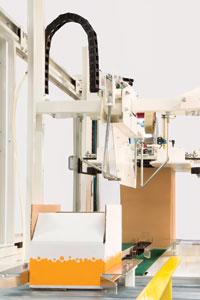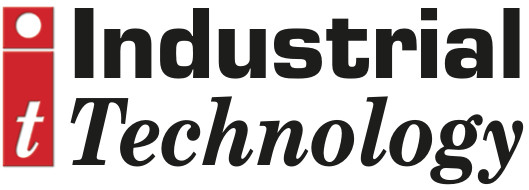
Posted to News on 23rd Mar 2016, 00:00
Electric versus pneumatics
There are new electric actuators on the block pumping up the volume, while pneumatics remain steadfast. The experts at Endoline offer their advice on when to use one over the other.

It’s an exercise in over-simplification to say pneumatic systems are the best choice for providing lower cost equipment and speed while a servo driven actuation system is best for high speed and positioning accuracy. The trade-offs are many, including cost of ownership, access to air supply, speed requirements and operating environment.
Once an application is defined, specifications need to be considered, including weight, size, speed, and the requirements for acceleration/deceleration and positioning. However, while all of these points are important there are two underlining factors which will determine whether pneumatic or electric end of line system is best: power requirements and speed.
If there is any significant performance differentiator, it is that servo driven systems are better understood for their high levels of repeatable speed and precision. With the growing demand for more complex applications, in particular contract packers and FMCG manufacturers who manage a range of different product case sizes and types to meet retailer demands, electric servo driven systems can provide greater versatility within this fast changing production environment.
The ability to reach higher speeds is achievable with electric servo driven systems in comparison to pneumatic actuators. Pushing pneumatic systems to higher speeds can also have a detrimental effect on the reliability of a machine resulting in excessive component wear and failure. A typical advantage of using servo driven systems is that they allow for dynamic changes to be made in velocity of fast moving sub-assemblies and allow them to be fine-tuned to suit particular applications, such as high volume snacks manufacturers who pack a range and variety of case sizes to suit customer demand, this is not simply achievable with pneumatic systems.
All-electric systems integrated with high reliability servo drives can achieve speeds of more than 30 random case sizes per minute, ticking the flexibility box. Increasingly sought after by global snack and drinks companies, the all-electric servo driven systems typically run 24/7 and, crucially, require little manual adjustment.
While allowing for higher levels of precision the introduction of servo drives gives machine builders the ability to make ‘smart’ systems, meeting the increasingly demanding requests from busy production halls. The earliest pneumatic machines date back to the post-war era and are conceivably the more economical choice. Pneumatic actuators generate precise linear motion, providing accuracy and repeatability, and offering simplicity to manufacturers who are seeking to automate a single sized case run.
Along with continuity, pneumatic systems are often more suited to packing scenarios within extreme temperature environments. From packing bags of ice cubes or tubs of fresh produce in a chilled environment. The availability of spare parts is simplified with pneumatic systems too as stocking spares is easier and delivery is immediate, while servos can take time. This is, however, improving as is the training of on-site engineers, as a whole new skill set is required in the upkeep of servo driven systems.
There are many strong arguments that can be made for both all-electric and pneumatic systems in helping manufacturers achieve a smaller carbon footprint. While pneumatics can cut down on energy consumption, due to the lack of electrical hook up, all-electric machines can reduce noise emissions and only use energy when required.
With an increase in the adoption of automated machines manufacturers looking to purchase a packing system will find that there is a solution to suit every scenario they are faced with. By working with their machinery supplier, a manufacturer must consider the advantages of both all-electric and pneumatic systems against their specific application requirement to make the correct choice.







